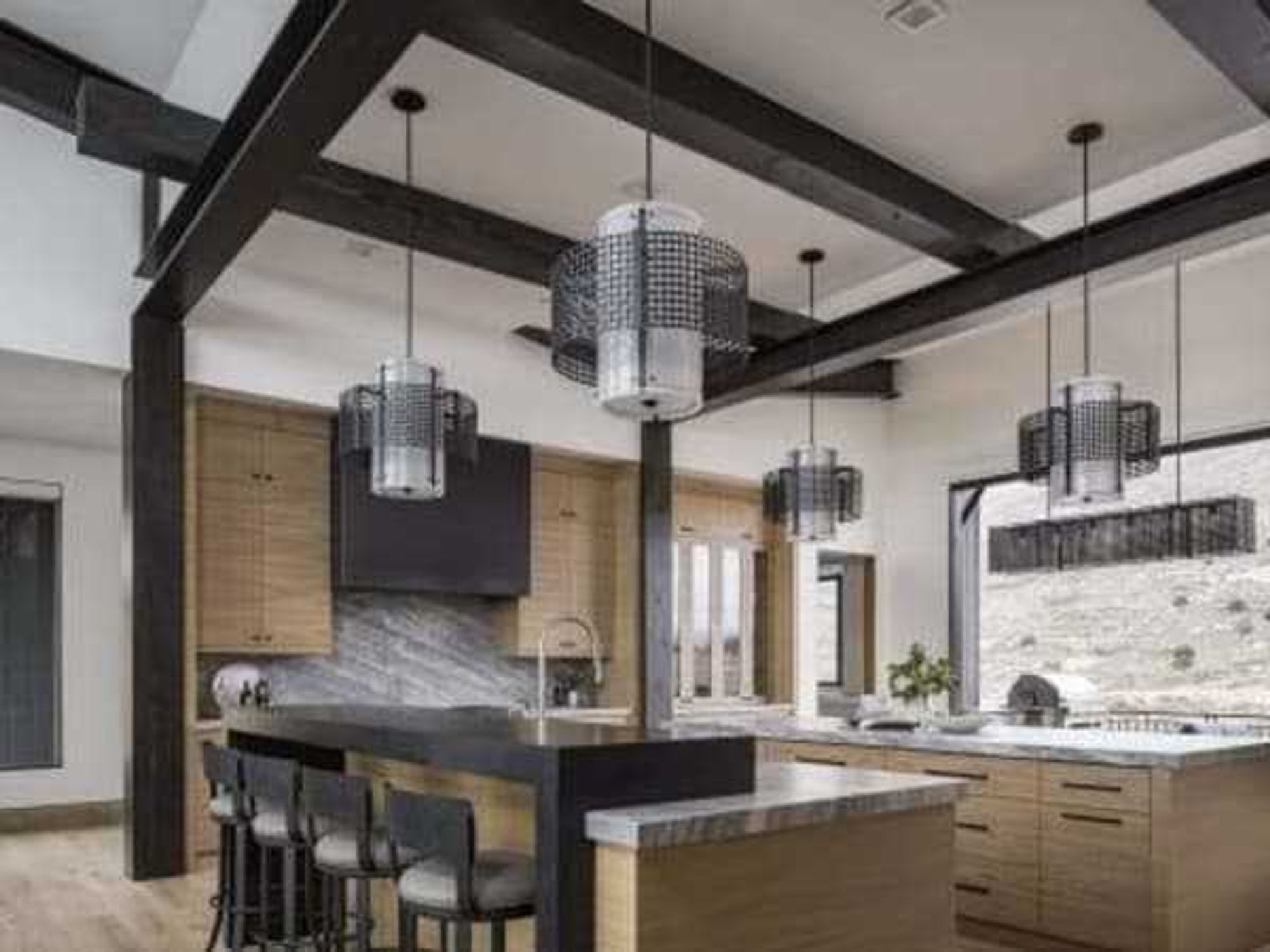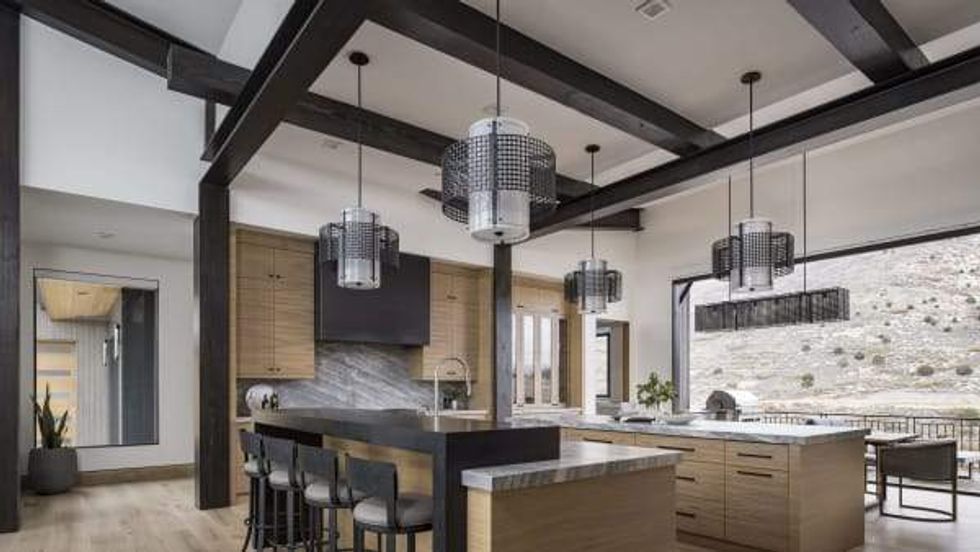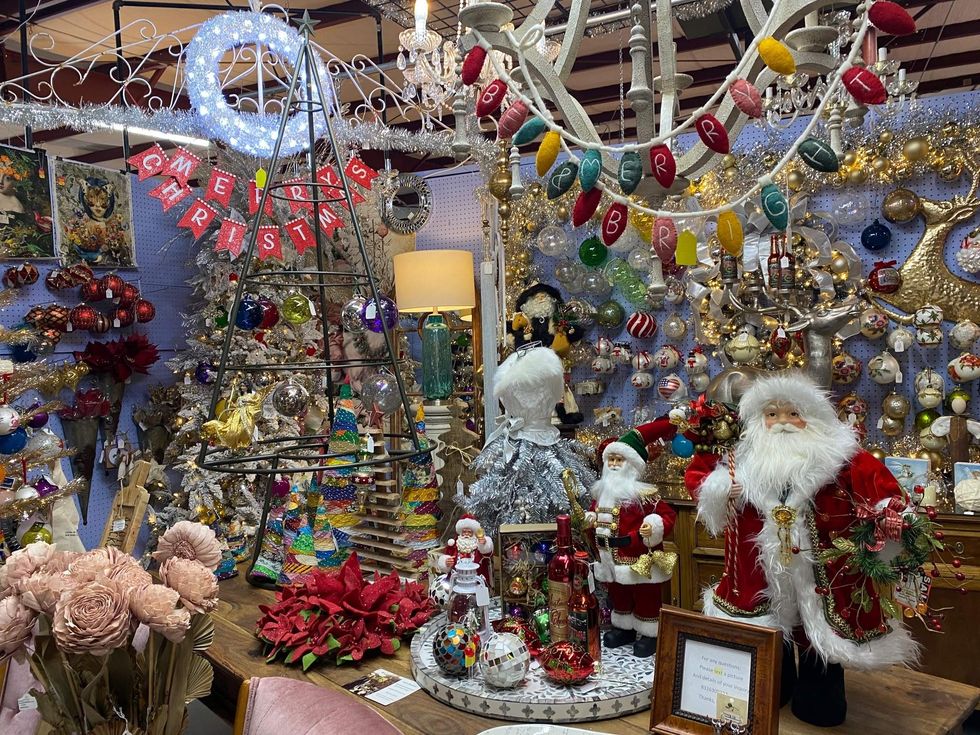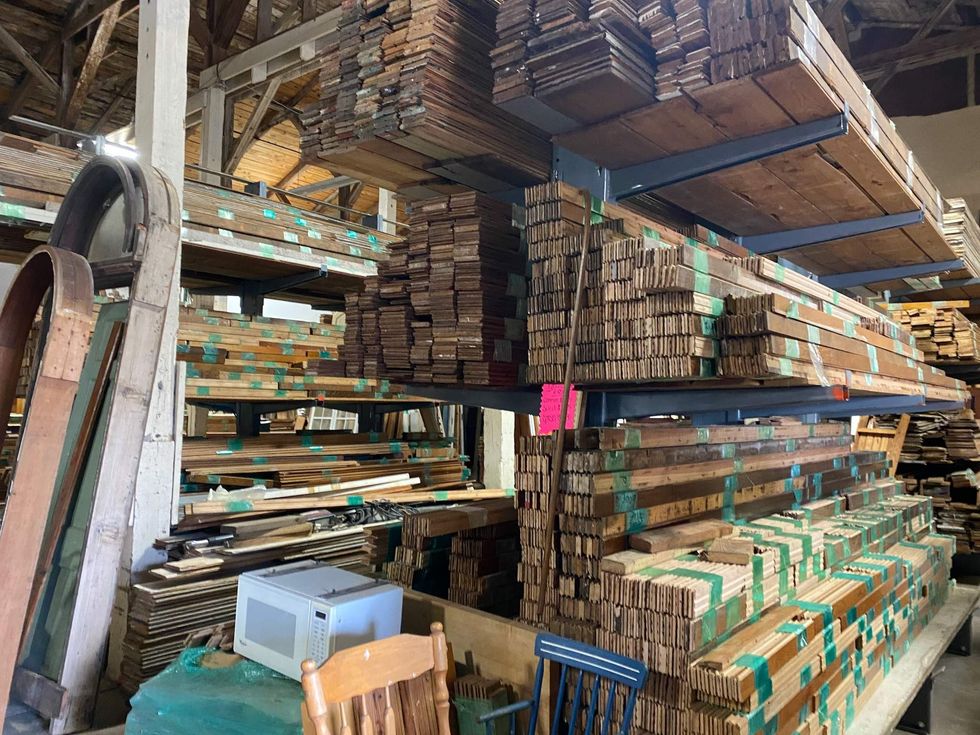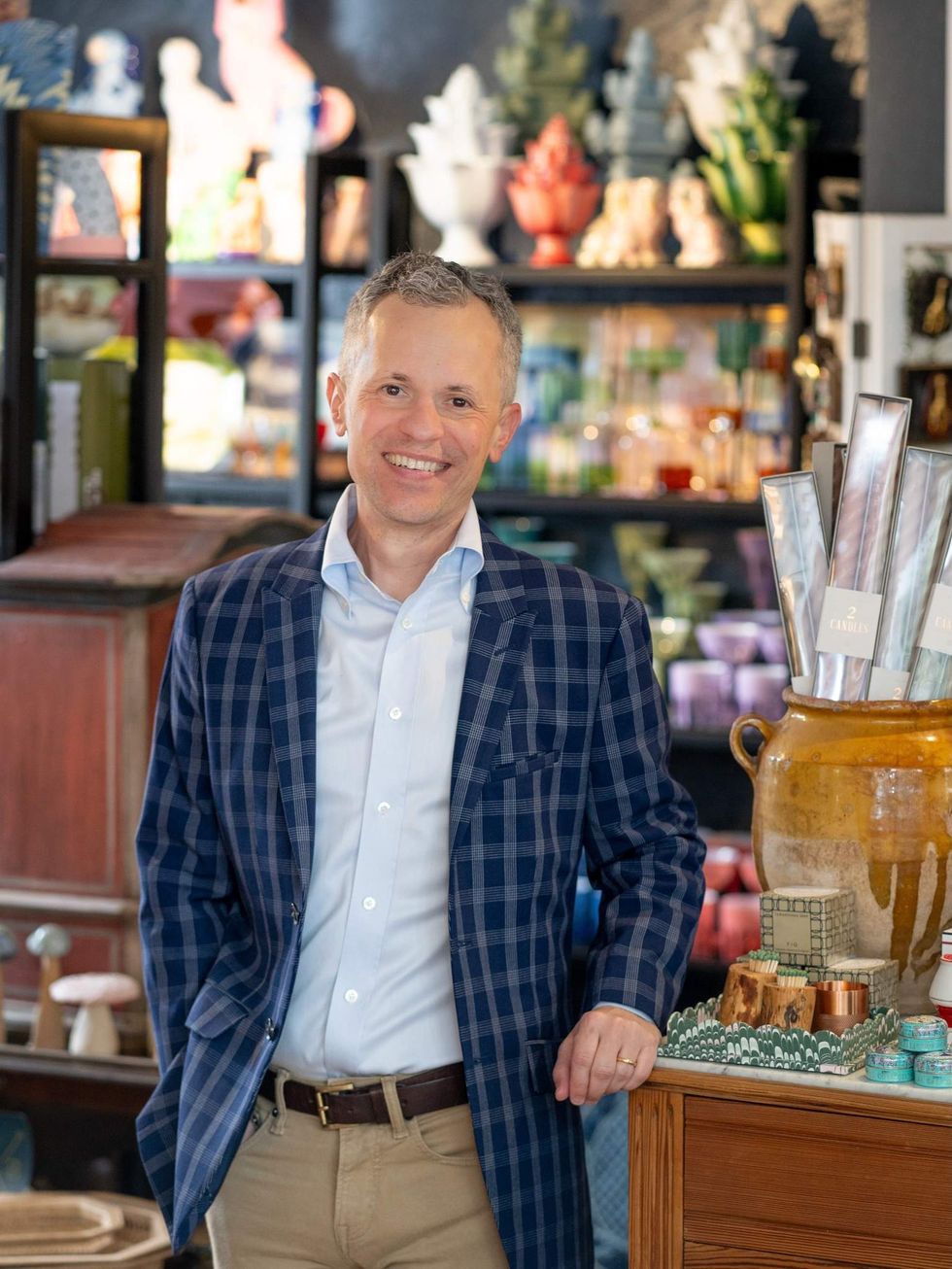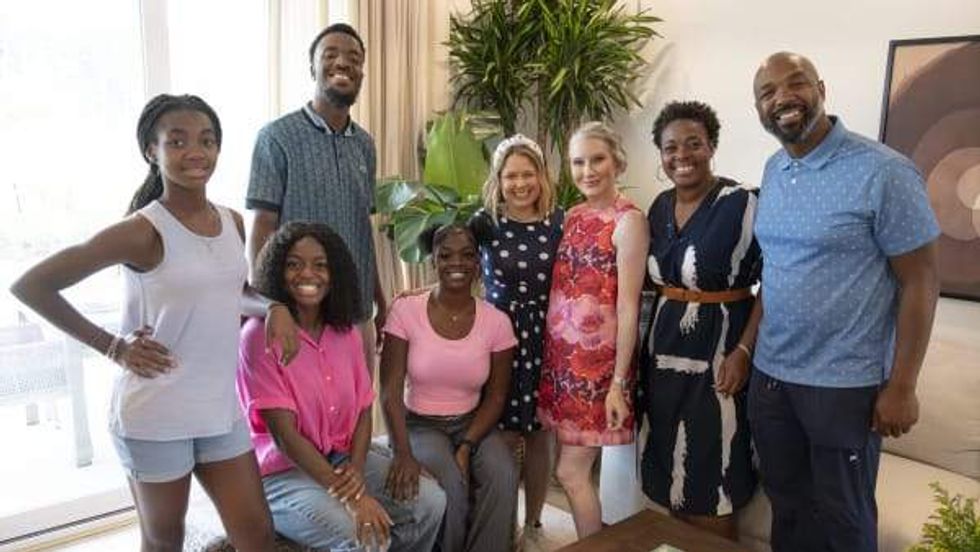The Vintage Contessa
Building green: With more eco-friendly products, builders & designers, it'snever been easier
 Window film can reduce the cost of running your air-conditioning.PR Web
Window film can reduce the cost of running your air-conditioning.PR Web A variety of architectural glass, wall system, art and cabinet glass ecoconscience products to consider are produced by Lambert made exclusively forBendheim.
A variety of architectural glass, wall system, art and cabinet glass ecoconscience products to consider are produced by Lambert made exclusively forBendheim. A low-flow toilet reduces water usage.
A low-flow toilet reduces water usage. Low-flow faucet by Grohe.Grohe
Low-flow faucet by Grohe.Grohe
When you think green building and design, you may imagine solar panels or water recycling and have an ill-conceived notion that the process is too expensive or complicated. However, there are many ways to simplify your choices in the process of building, remodeling or designing your new or existing home while minimizing the environmental impact.
When choosing “green” products, you give your family a healthier place to live and create a more energy efficient home with increased performance, which in turn saves you money. By starting to focus attention on indoor air quality, water and energy efficiency, and environmentally sound materials, you will make an impact on your life and the world in which we live.
By starting to focus attention on indoor air quality, water and energy efficiency, and environmentally sound materials, you will make an impact on your life and the world in which we live.
With a basic understanding of the benefits of green building accompanied with subtle changes geared towards eco-sensitive material selections, you will give back to the environment and in turn lessen the carbon footprint and overall impact on the world.
First question
In considering green building and design, you should first ask what is most important to you and your family. Is it indoor air quality, energy efficiency, materials and resources or water efficiency?
People in the United States spend 90 percent of their time indoors. Air pollutants are two to five times higher inside than outside. In fact, pollutants have increased at such an alarming rate that there has been a 160 percent increase in the rate of asthma in children over the last decade.
Any given space’s indoor air is a “complex mixture of visible and invisible contaminants,” according to GreenGuard Environmental Institute (GEI), a non-profit organization that works to reduce indoor air pollution. Strangely, most air purifiers do not work properly; they only clean 100- 200 sf and produce ozone in the process. These airborne pollutants include chemicals, dust, biological contaminants and anything that can populate the air.
Consider looking on the labels for VOC (volatile organic compounds) emissions. VOCs interact with one another and create new hazardous compounds as well as causing eye, nose, throat and skin irritations.
Look for a third party verifier
When selecting products, it is important to find out if it has been tested. Look for a third party verifier. GreenGuard Product Certification, is the premier verifier for indoor air quality.
“Indoor air quality is one of the major issues facing the sustainability community, and GreenGuard is at the forefront of protecting indoor environments,” S. Richard Fedrizzi, CEO & Founding Chairman, U.S. Green Building Council (USGBC), said in a statement.
An indoor air quality test may by conducted in your home by a specialist to identify problem areas. Bluegill Energy is among a number of businesses that provides environment testing, collecting and processing scientific data to determine the root cause of the issue and then make recommendations for the proper remediation necessary to correct or restore the affected area to a safe level.
Window film eliminates costly and damaging ultraviolet rays by 99 percent, the equivalent to an SPF 285+ lotion on your glass.
Adding a Sunbelt window film on your existing glass will lower solar heat gain and reduce the cost of running your air conditioning. Window film also eliminates costly and damaging ultraviolet rays by 99 percent, the equivalent to an SPF 285+ lotion on your glass.
Frustrating glare will be reduced and the strength and safety of your glass increases dramatically. It is safe on any glass and is a simple step to improve energy efficiency in your home.
Water efficiency is certainly most welcome in areas with long or short term drought conditions; however, there is a place for water efficiency in every community. The mean per capita of indoor daily water use in today’s home is slightly over 64 gallons. Implementing water conservation measures can reduce usage to fewer than 45 gallons. Fixtures and Fittings is among a number of businesses that offers unique options including low flow toilets and water efficient fixtures for sinks, tubs and showers.
When choosing sustainable materials with recycled content, you should also consider the manufacturers commitment to sustainability. Examine the products composition, look at the VOC levels. Consider if the cleaning products are safe to use. Look at the costs. Is the product recyclable?
Find these and other checklist at Regreen by ASID (American Society of Interior Designers) and USGBC (United States Green Building Council).
A variety of architectural glass, wall system, art and cabinet glass eco conscience products to consider are produced by Lambert made exclusively for Bendheim. A deep commitment to the environment is evident in their manufacturing, utilizing a large percentage, approximately 40 percent, of post-consumer glass recycled from the municipal waste stream. Dauphin Sales Inc. offers these products in Texas.
The second step is finding a building, remodeling or design professional that will help plan your home, avoiding expensive mistakes. His or her assistance in obtaining permits and giving direction on finding federal tax rebates and solar subsidies (which are varying by state) will be immeasurable.
The LEED (Leadership in Energy and Environmental Design Accredited Professional) Accredited Professional directory is a good place to find design and construction professionals who are familiar with LEED and green building in general.
According to the USGBC, “Since green building is an emerging field, the challenge is often in finding building professionals who are experienced and enthusiastic about building green. The LEED (Leadership in Energy and Environmental Design Accredited Professional) Accredited Professional directory is a good place to find design and construction professionals who are familiar with LEED and green building in general. The LEED for Homes Provider in your area may have some good recommendations.
"Another great resource on this front is to look for local builders with experience building LEED-certified homes. These professionals have experience building green homes to a high standard and can help to guide you through the process. "
Thanks to the active role of the U.S. Green Building Council - GBC Texas Gulf Coast Chapter in the community — I am on their board of directors — there has been a significant acceleration towards the initiation, development and implementation of green building in our area. Statistically, the chapter ranks third in the country with LEED APs and sixth in the nation for total number of individual members, which is exceptional for a city perceived to be one of the energy capitals of the world.
In addition Houston and surrounding communities score high in these areas:
· Ranks 4th in nation for total number LEED buildings in a metro area
· Ranks 3rd in nation for total number LEED for schools certified
· Ranks 4th in nation for total number LEED for schools registered
· Ranks 1st in nation for Energy Star homes
· Ranks 6th in nation for Energy Star buildings
· Houston is ranked 8th in nation for total LEED buildings
The second rating system designed specifically for homes was produced by the National Association of Home Builders implementing the National Green Building Standard, approved by ANSI (American National Standards Institute) in January of 2009. Builders and members of the trade who focus on their green continuing education can earn a Certified Green Professional (CGP) designation from the NAHB. They recognize builders, remodelers and other industry professionals who incorporate green building principles into homes— without driving up the cost of construction.
The next important professional to consider on your team is an ASID licensed professional. Look for an experienced interior designer who offers beautiful, healthy and environmentally sound solutions to design problems and challenges.
It’s been said that changes in behavior happen through education. So try it. Look online. Read books and magazines. Learn a little day by day. Take a step in the right direction and do what you can to be eco-friendly. Any size step forward will help contribute to the greater good of the environment. You can make a difference.
Donae Cangelosi Chramosta, the owner of The Vintage Contessa, writes about travel, design and fashion. As president of Cangelosi natural stone contractors, she is committed to green building and teaches classes on the subject for the GreenGuard Institute.
